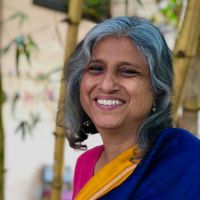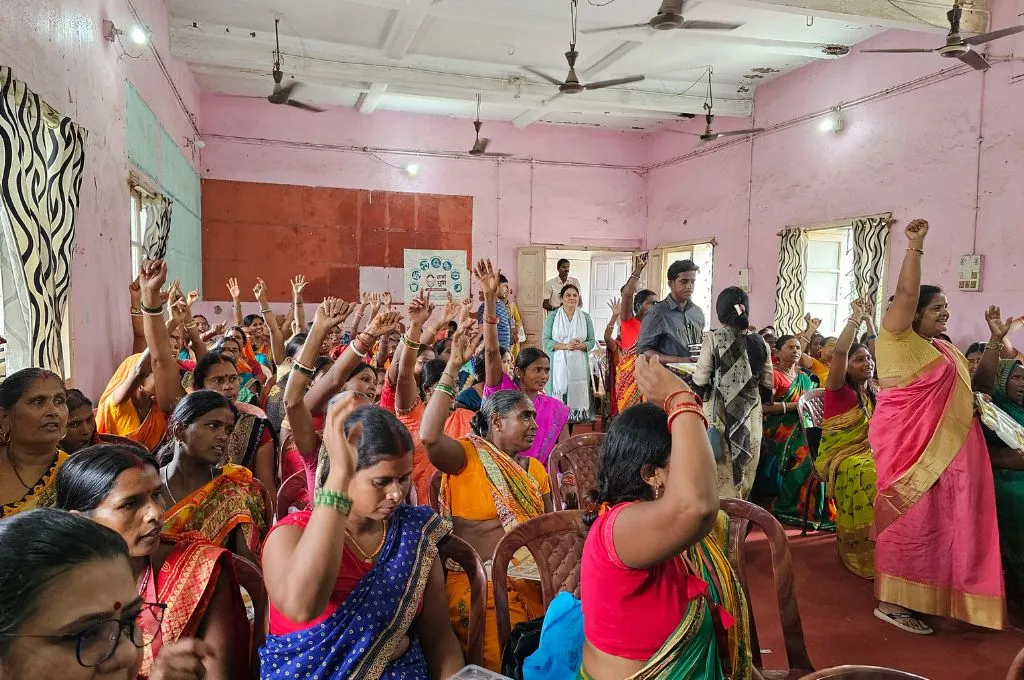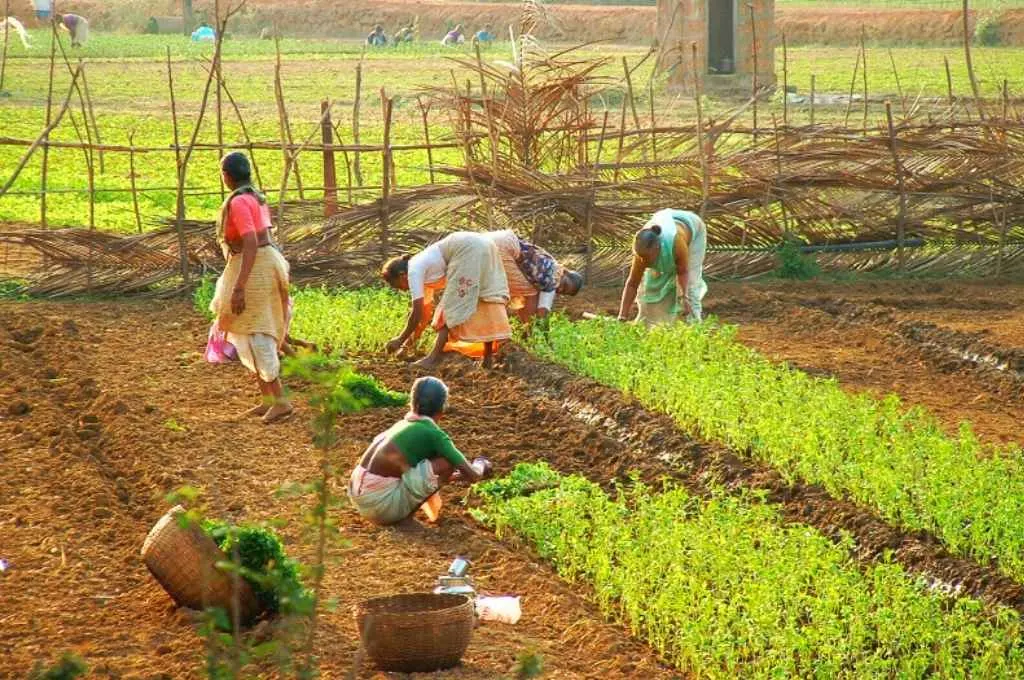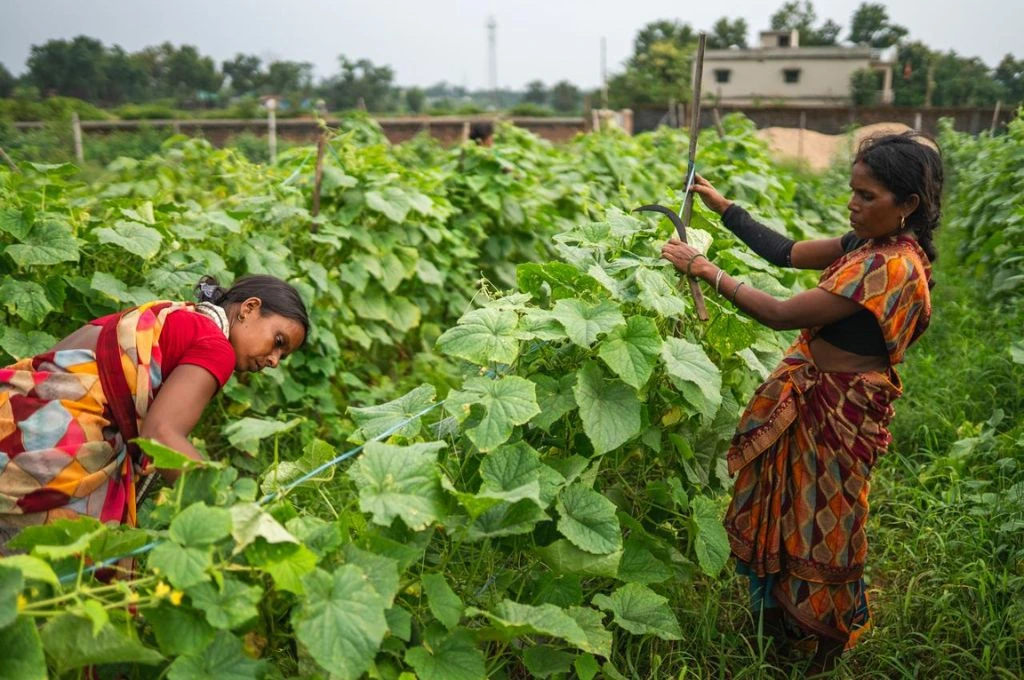In the 22 years since the Companies (Amendment) Act, 2002, was enacted, approximately 7,000 farmer producer organisations (FPOs)—comprising more than 4.3 million small producers—have been registered in India. Of these, 92 percent are farm-based. A majority of FPOs function as simple intermediaries in the agriculture value chain. This means that they are involved in basic processing, which includes grading, sorting, and aggregating.
Approximately 90 percent of the FPOs in the country primarily engage in input management, that is, they try to achieve economies of scale (cost advantage that companies obtain due to their scale) by buying inputs such as fertilisers, seeds, and pesticides. Not many focus on managing outputs, even something as basic as primary output, which is an aggregation of the farmers’ produce to be taken to the mandi. This limited use of the FPO model is one of the primary reasons why most of them are unviable enterprises. According to one estimate, 86 percent of FPOs have paid-up capital lower than INR 10 lakh and offer little to the individual farmers or the FPOs in terms of enhanced incomes or market clout.
Value addition, also called ‘off-farm activities’, refers to the creation of market-ready products in any domain, be it food, fashion, or lifestyle. Value-added products such as cereals, jams, baskets, and clothes allow producers to generate a higher return. They are thus a key lever for increasing farmers’ incomes.

Value addition is essentially manufacturing
Manufacturing, unlike farming, is not an individual activity. A smallholder farmer with 1–5 acres of land can single-handedly cultivate and sell produce. But manufacturing is not an endeavour that can be undertaken individually; production and marketing require the concerted efforts of a group of people. For instance, one woman cannot produce tomato ketchup and sell it to a fast-moving consumer good (FMCG) company.
This means that if off-farm producer companies (OFPOs) are to thrive, we will need a shift from an individual farmer mindset to a manufacturing-oriented perspective. Most FPOs in India are involved in almost no value addition and are only engaged in selling farm produce. This is because the amount of processing required on produce needs to be significantly high for it to add to the FPO’s margins. For instance, if farmers produce dal and get it polished in a dal mill before they sell it, it does nothing to improve margins at the FPO level.
If we want to see an increase in farmer incomes, we have to adopt a manufacturing mindset.
If we want to see an increase in farmer incomes, we have to adopt a manufacturing mindset in principle and practice. This will necessitate following a model of distributed and decentralised production that adheres to the tenets of state-of-the-art manufacturing.
Globally, all manufacturing units have become automated now because of a shortage of labour. However, that cannot be a solution for India since we are a country that needs to create employment. Moreover, we have various kinds of markets—regional, national, and global—that require the standardisation of processes, high-quality products, and a good price. How do you get to that without 100 percent automation?
A decentralised, distributed model of manufacturing
One approach to manufacturing is the hub-and-spoke model. At the spokes, the activity can be informal, but at the hub, there is fair degree of formalisation. Spokes, which is where the communities are, are located within a 5–10 km radius of the hub.

Consider a group of 30 women from a village who work from home and make banana fibre pots. They have a room where the goods are collected, aggregated, and stored. Every week, an FPO representative goes to the village to pick up a week’s worth of baskets and brings them to the common facility centre, where they’re checked. Then the women’s handiwork goes through the set processes. For instance, every banana basket is subjected to temperatures of up to 60°C in a solar heater. At this level (the hub), the required infrastructure can be installed, processes established and standardised, and the quality of products can be checked, just like in manufacturing plants.
The spokes can exist outside the ambit of the Factories Act, which sets safety and efficiency standards for persons at workplaces, because they are small and distributed and leverage the vast informal workforce in the country. The hub, however, must be formal and incorporate all the policies that make it a formal establishment. In the case of food products, for example, this would include FSSAI compliances. This model also helps communities move from an informal to a formal labour system.
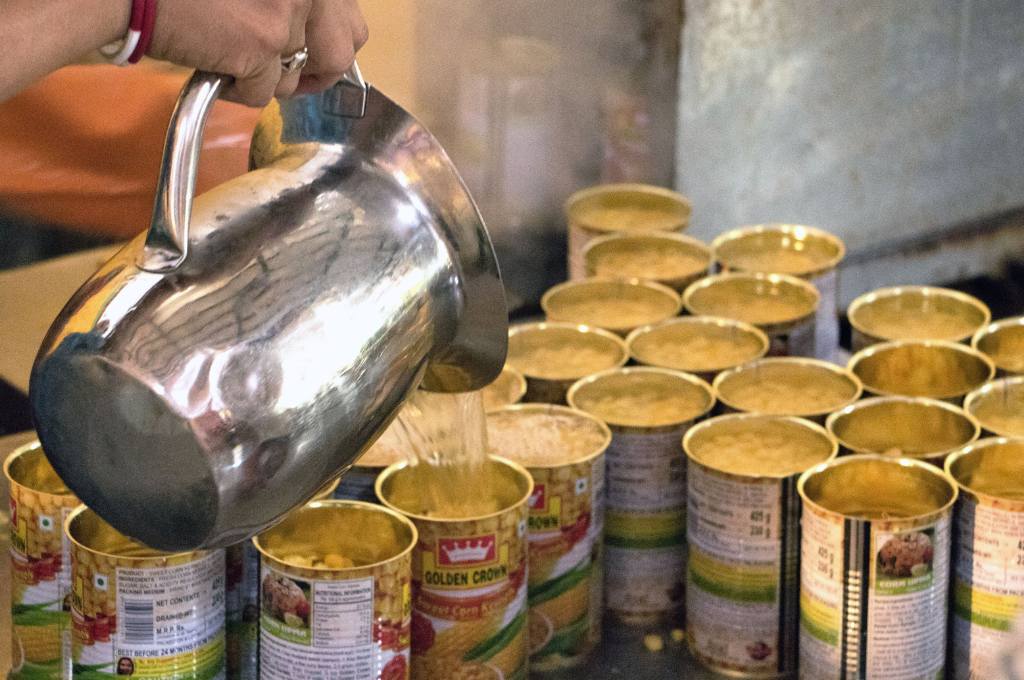
The 6C framework
Industree has built successful OFPOs over the years and our lessons and insights can be captured in what we call the 6C framework. This framework can be implemented by other organisations looking to establish OFPOs.
1. Construct
To build economies of scale, aggregation is critical. Once that has been achieved, you need access to services and infrastructure. The services part essentially requires hiring people to work in the FPOs, and infrastructure includes common facilities such as premises and buildings. Having such spaces is imperative for value addition.
Whereas in a typical FPO, individual farmers are the shareholders, we have opted to engage producer institutions as shareholders. Producer institutions include self-help groups (SHGs), federations, or mutual benefit trusts (MBTs). We have taken the MBT route. Today we have 35 MBTs, each of which has approximately 200–400 members. In our experience, this is a model that works better for value addition. In MBTs, the producers are signatories of all processes, so the essence of ownership is higher. This helps producers with self-recognition and provides definite stability for the future.
2. Channel
One of the most important steps that OFPOs working on value-added products need to think about is identifying potential markets and customers. In parallel, one must evaluate the natural resources (corn, bamboo, millet, grass, etc.) available in a region and build channels and market access for thoese products.
However, it’s not always necessary to produce an end product. OFPOs can also act as suppliers to bigger companies. Vrutti, for example, works with an FPO in Chhattisgarh that is involved in producing custard apple pulp. This pulp is then sold to ice cream companies. However, this path of semi-processing, of becoming a sub-supplier to a larger brand has also not been explored thoroughly by Indian FPOs.
3. Capacity
Training people in the value chain is key. Farmers need to be equipped with the professional skills required to run such enterprises. In the hub-and-spoke model, there must be continuous training, especially for the people at the spoke level. They cannot function in isolation and need to be provided with skills and feedback on their work regularly so that they can meet the expected standards.
At the hub level, the model requires professionals from the world of manufacturing—people who understand issues such as minimum wage, HR management, quality, processes and systems, as well as all the relevant laws and compliances.
FPOs are enterprises, and each member is a micro-entrepreneur.
All of this is currently missing in the FPO world, and this is where a concerted effort by the Ministry of Skill Development and Entrepreneurship becomes necessary. The Ministry needs to explore these aspects of entrepreneurship, manufacturing, and management in their programmes. This is because FPOs are enterprises, and each member is a micro-entrepreneur. The government must develop theory and practice with respect to entrepreneurship. They must think of training paraprofessionals for the FPO industry who can look after HR, finance, quality, manufacturing, compliance, etc. These programmes should run enmasse so that there are enough professionals available.
4. Create
Another important element is thinking about product design and development. Once you understand the market and customer demand, what will you make? This phase links the aspirations of consumers with what the farmers produce. Farmers usually have no direct link to the end consumers. Therefore product designers need to step in to fill in the gap. They do so by asking: How should the product be designed? What is the recipe? For example, if local farmers in a particular region grow millet, a marketable product such as millet bars or millet cereals can be designed around that farm produce.
Create helps develop products that align with market preferences and are feasible and viable to make. This stage includes R&D, design, and product development. For instance, we worked with research labs to develop new processes within the banana bark value chain in order to create banana bark silk and fibre for weaving.
5. Capital
Running an OFPO like a manufacturing enterprise requires a high level of upfront investment as well as access to cheap working capital. These are critical because OFPOs must extend a 60- to 90-day credit period to their customers. To be able to do this and manage cashflows, they need working capital financing.
Working capital is expensive with non-banking financial companies (NBFCs) lending at 16 percent. This makes it harder for FPOs to be financially viable. Government schemes such as Agricultural Marketing Infrastructure, Venture Capital Assistance, and Mission for Integrated Development of Horticulture cover just 40–60 percent of the capital required for setting up FPOs. The rest of the capital needs to be raised from donors and CSRs as grants.
Essentially, we need to look at blended finance—a mix of government, market, and philanthropic capital—because during the first three years, it is extremely difficult to make do with money from government schemes alone. After this period, the company should aim for self-sustenance, such that the margins are enough for the OFPOs to continue on their own.
Well-designed and structured boards can also play a critical role in accessing capital. OFPOs usually start as sub-suppliers. Hence, at least two of their clients should be on the board, in addition to a few from the community. A mix of government, private sector, and community members can help OFPOs drive growth and profitability.
6. Connect
The final element of the 6C framework involves using technology to link producers to a larger ecosystem and scale opportunities with traceability and transparency, which are vital in the case of manufacturing. Traceability is especially important for OFPOs as it’s a major selling point with customers.
Industree is building a collaborative digital social platform called the Platform for Inclusive Entrepreneurship (PIE). It aims to provide a collective space for knowledge assets (content, processes, tools, solutions) and data analytics to innovate and respond), enabling every stakeholder to bring their strengths in a unified way.
At Industree, GreenKraft is an example of the 6Cs in practice. An FPO with 10,000 members, the majority of whom are women, the company manufactures handwoven baskets made from recycled banana bark, sal leaf plates, and bamboo products. Since its inception in 2012, the company has earned USD 5 million in sales and its customers include H&M, TJ Max, and Ikea.
The landscape of OFPOs in India reveals both potential and challenges. In order to effectively build OFPOs at scale, we need to adopt a manufacturing mindset that incorporates a holistic framework in different contexts.
—
Know more
- Read this report to learn more about how FPOs have performed in India.
- Read this explainer on FPOs.

